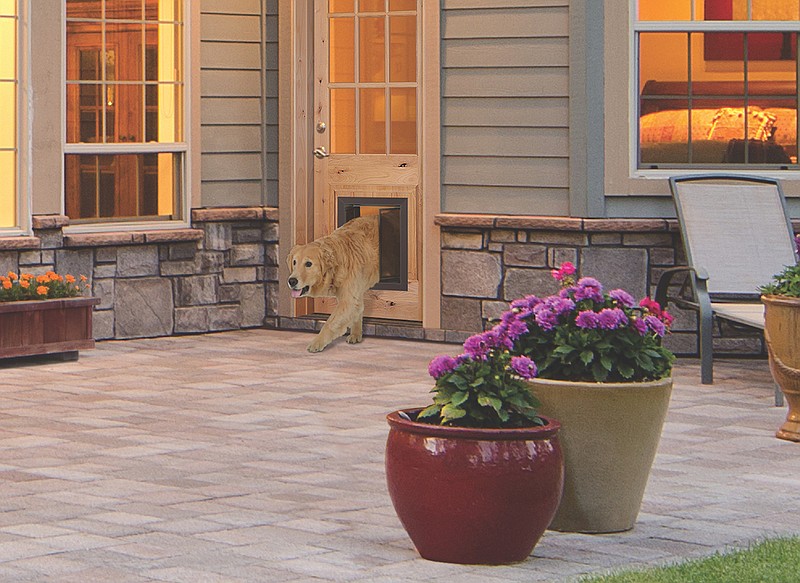"Would you please stop shedding?" I beg Luke, our 55-pound hound mix. "Please keep your prodigious fur to yourself."
Luke and I have this conversation often as I deal daily with the puffy apricot fur balls that billow around the house. "I know you can't help it," I add, "but geeze!"
"He only blows his coat twice a year," my husband, DC, says, trying to put a bright spin on the situation.
"Yeah," I say, "Once from January to June, and again from July to December."
"How do you deal with it?" I asked my dog-owning friend Paula, recently, during a visit to her home.
"With Marvin the Martian," she said, referring to her robotic Roomba vacuum cleaner.
I've known about these hi-tech vacuum cleaners, but never wanted one. The idea of a robot randomly roaming the house seems even less attractive than having dog fur everywhere.
"He only cleans when I tell him to," she said. "I program his active times from my phone."
Back home, I tell DC about Marvin. The next day, DC, intuitive man, calls me from Costco, where he is facing a display of Roombas for sale. "Which model do you want?" he asks.
By that afternoon our new Roomba, Rosie, named after the maid in "The Jetsons," is connected to the house Wi-Fi and ready for duty. "Execute," I say and gleefully press the touch pad on my phone where it says, "Vacuum Everywhere." Rosie makes a cheerful wake-up sound, disengages from her dock, and soon is scooting across the floor and going under chairs, beds, and sofas, where no vacuum has gone before.
Fur management is just one of the many domestic matters pet owners must face when they bring furry friends into the fold. And studies show the numbers of homes doing just that is way up. According to the American Society for the Prevention of Cruelty to Animals, one in five U.S. households adopted a pet during the pandemic. Today 53% of American households have a dog and 36% have a cat, according to a report released last month from Spots.com.
That's a lot of fur flying. But besides fending off fuzz, here's what else pet owners should consider when finding or making a home for Fido or Fluffy:
◼️ Get the HOA OK. Not every community allows pets. Some homeowners associations and landlords limit the number and size of pets a homeowner or renter can have, and in some cases exclude certain breeds. Inquire about pet policies before you buy or rent. Some HOAs also have fence restrictions, which could limit the type and height of fences, or prohibit adding a visible fence at all.
◼️ Pick pet-friendly floors. Hard floors, particularly tile, stone, vinyl or wood (provided you mop up spills quickly) are best for pets as they are easier to clean. Carpet, though cozy, can trap pet smells, fur, fleas and dander, and is more prone to damage from chewing, clawing and staining.
◼️ Add an escape hatch. Pet doors make pet ownership possible for those who aren't home all day to let their pets out. Now that more workers are going back to the office, sales of pet doors are up, say industry insiders. Doors come in a variety of sizes, standard or electronic (triggered by the pet's collar) and can go into any wall or door leading outside. Though pet doors sell for as little as $50, consider paying more before you cut a hole in your wall. Inexpensive pet doors often need to have their flaps replaced and can offer poor temperature control. Higher end dog doors have better insulation, stronger seals to control extreme temperatures, better security features and flaps that will likely outlast the house, says Maria Lewis, a spokeswoman for PlexiDor, which has been making high-end dog doors in America since 1985, and whose doors sell for $298 to $1,985, plus installation.
◼️ Install a safe fence. If your home has a yard, make it one your dog can enjoy safely. Put in a good fence that your pooch can't jump over or dig under. Electric fences work well for keeping pets in the yard, but they won't keep other animals out.
◼️ Survey the neighborhood. A house or apartment with easy access to walking trails or a dog park is a real plus for dogs and their owners.
◼️ Find doggie care. If you work out of the house, or travel, find a friend or service that can care for your pet when you're gone and can provide visits, walks or boarding. You can find dog-walkers and sitters in your area through online services such as Wag! and Rover. Younger and athletic dogs can also benefit from the socializing and exercise available through play care programs.
◼️ Build pet care into the budget. Pets may give love freely, but they are far from free. Food, treats, toys, vet care, grooming and dog sitting add up, and that's not counting the robot vacuum cleaner.
Marni Jameson is the author of six home and lifestyle books, including "What to Do With Everything You Own to Leave the Legacy You Want."

